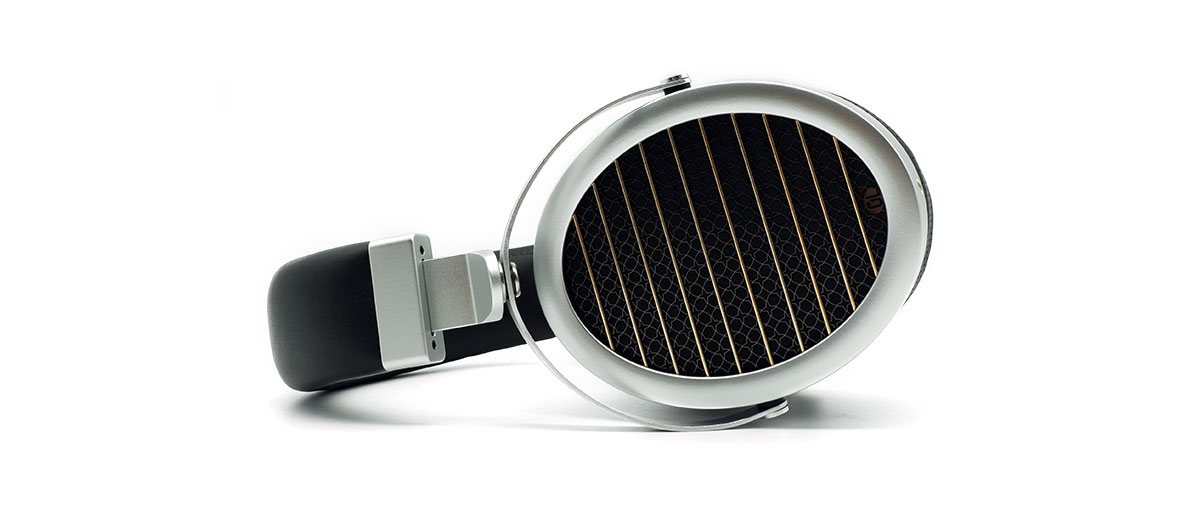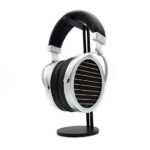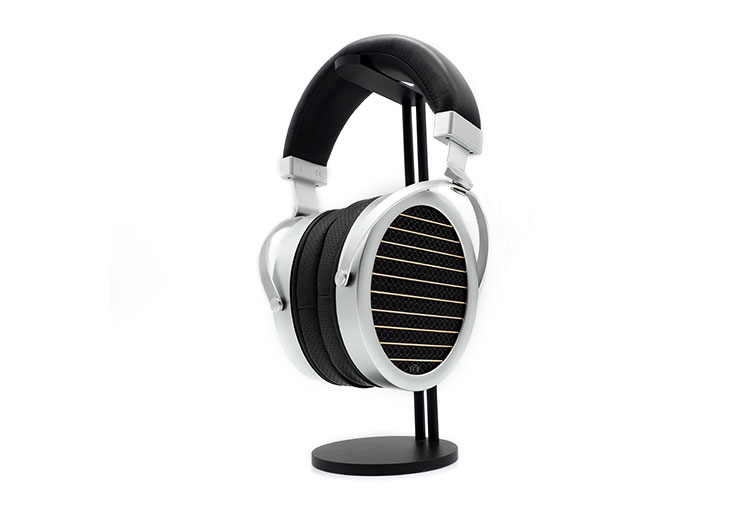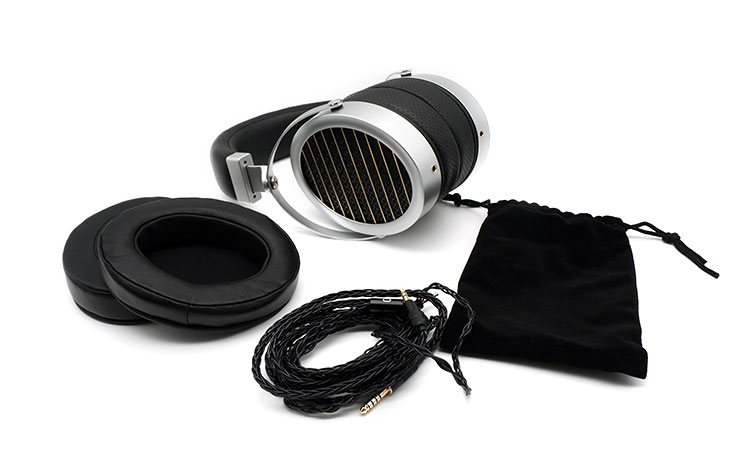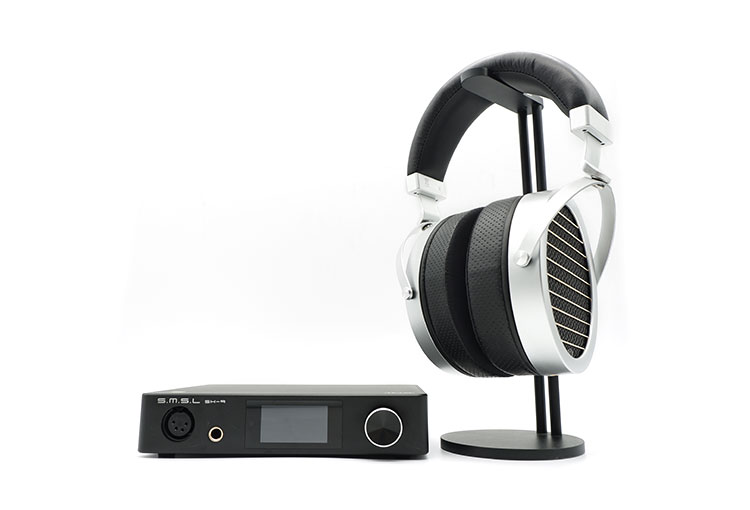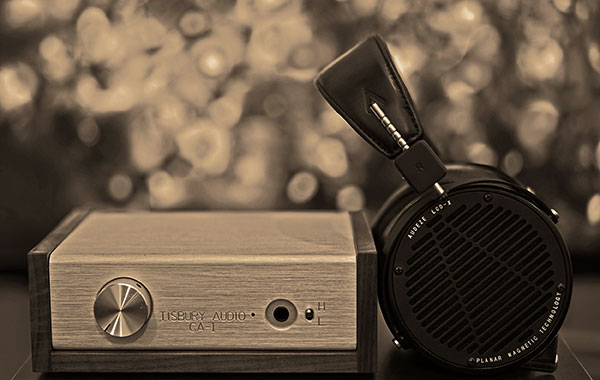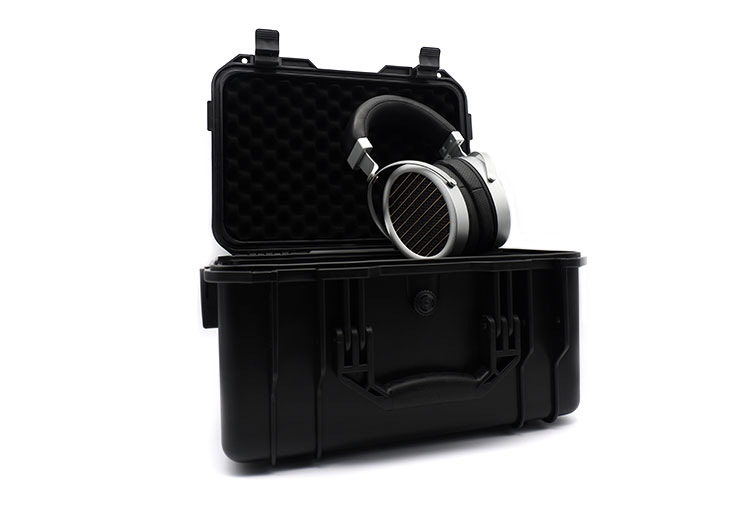The Gold Planar GL2000 is the company’s flagship circumaural open-back planar magnetic headphone with a double magnetic circuit design. It is priced at $639.
Disclaimer: The Gold Planar GL2000 sent to us is a sample in exchange for our honest opinion. We thank the team at Linsoul for giving us this opportunity.
To read more about Linsoul products we have reviewed on Headfonics click here.
Note, this review follows our new scoring guidelines for 2021 which you can read up on here.
Gold Planar is an audio company with a strong background in materials technology. Both the founder, together with the Chief Technical Officer also have extensive experience with driver technology.
They have since applied their expertise in planar magnetic driver technology, AMT driver technology, and folded ribbon driver technology to their latest headphone designs.
Gold Planar has been releasing planar magnetic driver headphones since 2017. In 2020, they decided to release 3 flagship headphones in their lineup, 1 headphone for each technology that they have extensive expertise in.
Their GL850 utilizes their AMT driver technology, while the GL1200 utilizes folded ribbon driver technology, and finally, the GL2000, which utilizes their planar magnetic driver technology.
We will be taking a closer look at how the GL2000 compares with other offerings in its price range.
Tech Highlights
We received the double magnet version of the GL2000, and it is equipped with N52 magnets to induce high magnetic flux density. With the GL2000, Gold Planar created a new planar diaphragm that is designed to increase the surface area and airflow inside the drivers.
Each driver is housed in a machined aluminum chassis that is designed to maximize airflow. And the whole headphone frame and chassis used aircraft-grade aluminum to reduce the overall weight of the headphone.
Design
Since the headphone is designed with aircraft-grade aluminum, it’s not very heavy. With my kitchen scale saying that the headphone weighs in at 550g, it’s considerably lighter than heavier planars like the ones from Audeze.
The earcups, which are made of hard plastic painted in the same color as the rest of the aluminum parts of the headphone, have a striking similarity to the egg-shaped earcup design that Hifiman uses with their headphones, except that the GL2000 has more of an oblong shape to it. Also, the ear cups are just slightly smaller than the egg-shaped cups from Hifiman.
The headband is a more traditional foam padded adjustable headband system with a swivel system at the yokes. The available adjustments in the headband system ensure that the GL2000 can fit a wide variety of head shapes and sizes.
The GL2000 came with a spare set of hybrid earpads, and it can easily be replaced. Each earcup is equipped with a lip that fits the gap on the GL2000’s earcups, similar to what I’ve seen with some AKG and Audio Technica designs.
The cable that came with the GL2000 is a braided black cable, that is soft enough to look neat on the desk, while still being designed to be tangle-free.
The cable termination in the earcups is a 3.5mm mono connection, with a similar wiring configuration to the newer Hifiman headphones, so I was able to use my Ananda’s balanced 4-pin XLR cable with the GL2000 as well.
Comfort
Despite weighing 550g, the GL2000 is not particularly heavy when it’s worn. The headband itself is covered in padding wrapped in faux leather. This ensures that there are no hot spots on my head. In terms of comfort, the GL2000 is a comfortable headphone that distributes its weight quite well.
The earpads that were installed on the GL2000 when they arrived are the leather earpads. After longer periods of wearing them, I typically started to sweat around the ears. This has not happened to me with other headphones, even on my Audeze LCD-X which also came in stock leather pads.
Swapping out the earpads to the perforated hybrid pads that were also provided, the GL2000 is considerably more comfortable, since they made me sweat considerably less.
The GL2000 induces a moderate amount of clamp force. It generally doesn’t fall off my head, but some movement may dislodge the headphones slightly, and it would need some readjustment to ensure that the earpads are in the proper place.
With the open back nature of the GL2000, there can be some expected sound leak, and outside noise can be heard. Outside noise on the GL2000 is not as audible as it is on the Hifiman Ananda, but it isolates about as much as a Sennheiser HD600 does.
Earpad Swapping
Both earpads that come with the GL2000 are soft. When they are not on the headphones, they can easily be squeezed. The foam used by Gold Planar is not memory foam, but they’re soft enough that it would conform well to the ears when they’re worn.
With the leather pads installed on the GL2000 when they arrived, I did most of my initial listening tests with the stock leather pads. The leather pads ended up being too warm both in an audible and a physical sense. Not only were they making me sweat, but they also push back the treble a bit too much to have a good tonal balance with the bass and midrange.
Swapping them out for the perforated hybrid earpads, the experience is significantly improved in my opinion. The GL2000 didn’t make me sweat anymore. The tonality is also balanced out quite a bit compared to the leather pads, so I ended up doing most of my critical listening tests with the hybrid pads.
Packaging & Accessories
The GL2000 arrived in a brown box with a hard plastic tactical case inside. The headphones and the accessories are all secured with foam inside the tactical case.
The tactical case is a nice touch at this price point since most of their competition would just send their headphones with boxes, or at most a display case. The included tactical case is a bit more practical for situations when you’d want to bring out your headphones.
Inside the case are the headphones, a 4.4mm terminated balanced cable, and a spare set of pads for slightly tuning the headphones.
It would have been nice if Gold Planar also sent a balanced 4.4mm to the single-ended adaptor to make sure that the headphone would be more versatile. Their choice of default balanced connector is nice though since 4.4mm is quickly becoming the standard for balanced connections.
Sound Impressions
Bass
Sub-bass can generally be perceived with the GL2000, it could use a bit of a boost, as it can easily be overshadowed by the quantity of the mid-bass response. Details and textures in the sub-bass region can easily be picked out though. Mid-bass is slightly more elevated with the GL2000, but it doesn’t become overbearing.
The GL2000 has a quick and impactful bass response, but it could have used a bit more decay to sound a bit more natural. With drum hits, each strike is immediate, and it has a good amount of bite, but the decay seems a bit too short to sound natural. Drums also sound like they’re being stuck with a slightly larger flat object instead of drumsticks at times.
The sense of mid-bass presence is good for a ‘flowy’ bass response. Bass guitars sound lush and smooth whilst still being detailed.
Midrange
Male vocals are slightly pushed back when compared to female vocals. Vocal performances such as the one done by Josh Groban in Broken Vow sound fairly detailed, but slightly drier than usual. Female vocals have better harmonic richness, which makes it a touch more natural.
Both acoustic guitars and pianos are forward in their presentation. Each strum of the guitar comes out very detailed, and singular. The fundamental tones of piano strikes are also very prominent. String instruments such as cellos sound very full-bodied, but the faster decay prevents it from becoming euphonic.
The midrange on the GL2000 strikes a good balance with the bass region but it is generally forward when compared to the treble. It has a slightly dry character to it. Giving it a very matter-of-fact type of presentation.
Treble
The lower treble is slightly subdued and tends to make cymbal hits slightly pushed back. Each percussive strike on cymbals is very detailed though, where each cymbal strike can easily be visualized. Even when there are busier passages where cymbals are hit in succession, each hit sounds very distinct and controlled.
The upper treble, which is responsible for the airiness of any song, tends to roll off a bit too early. This gives the GL2000 a slightly congested feeling at times.
While the leather pads would make the treble even more recessed, it’s nice to have it as an additional tuning option. So it’s possible to have a more neutral presentation with the GL2000 on its hybrid pads or a warmer tilt with the leather pads.
Staging
In terms of width, the soundstage on the GL2000 is slightly smaller than what the size of the ear cups might suggest. Most sounds generally remain a few inches beyond my ears laterally, while the center image falls on my nose, or just slightly beyond that.
Although the soundstage of the GL2000 is on the slightly intimate side for an open back headphone, it doesn’t feel too congested. Directionality and image clarity is exceptional on the GL2000 though. Each image that is formed is very clear and chiseled.
Resolution
The GL2000 is generally a very detailed headphone, where most of the elements of the music are usually presented well. Accurate details are especially easy to pick out in the midrange.
When it comes to dynamics though, the GL2000 seems to make the music sound slightly compressed. This is okay for most modern recordings, however, when it comes to the gentleness and the crescendo found in classical cello pieces, the GL2000 would sometimes become a bit less engaging.
Synergy
Like most headphones, the GL2000 will produce sound when it’s plugged into a phone. However, that does not mean it can be powered by a weak source. When it’s plugged into my phone, there is obvious clipping, and the sound gets distorted quickly. The sound also gets compressed, and sibilant.
Plugging the GL2000 into a DAC/AMP combo like the SU-9/SH-9 combo from SMSL, it has a superior response. There is a marked improvement in soundstage and clarity with a much better tonal balance.
Paired with a Chord 2qute DAC connected to a Burson Soloist 3X, there is a slight improvement over what I hear from the SMSL combo. Texturization is slightly improved, and there is a better sense of punch and control with this combo.
The dynamic range is also slightly improved. However, I ended up preferring the SMSL combo because of the slightly less punchy and more glossed presentation than on the Burson Soloist 3X/Chord 2qute setup.
With an impedance rating of 60Ω, and a 99dB/mW SPL, the GL2000 is not the most difficult headphone to drive. Most DAPs and practically all desktop amplifiers will easily be able to drive the GL2000 to a good volume. Giving it more available current will make it scale with the connected upstream equipment though.
Select Comparisons
Hifiman Ananda
With the Ananda now being on permanent sale at $699, the price gap between these two headphones is now quite narrow.
The accessories that come with the Ananda include a presentation case, and 2 sets of cables, while the GL2000 has a tactical case, and an extra pair of hybrid pads as well as a balanced cable. The tactical case with the GL2000 is a nice touch though since this makes the GL2000 quite a bit more mobile.
Design
When it comes to looks, both have quite a lot in common. The most striking resemblance that I can see between the 2 is the shape of the earcups. They both sport elongated earcups, which made me initially think that they might sound similar since egg-shaped Hifiman headphones usually sound different from the round ones.
While the Ananda is significantly lighter at just 400g, the GL2000 manages to be about equally comfortable. The softer headband material makes weight distribution slightly more efficient on the GL2000, making it as comfortable as the Ananda. Also, the GL2000 has yoke swivels, a clear advantage over the fixed ones that are on the Ananda.
Efficiency
While the GL2000 is not particularly hard to drive, the Ananda is much easier to power. The Ananda typically reaches the same volume at least 6 notches more quickly on the SMSL SH-9. While on a desktop setup, this might not be too much of a difference but running on a DAP or other mobile solutions, the GL2000 might be a bit more challenging to sufficiently power.
Tuning
The GL2000 is slightly more rolled off in the sub-bass, but it has a slightly more pronounced mid-bass presence. However, the biggest difference is that the GL2000 has a better sense of punch in contrast to the more polite bass impact that can be found on the Ananda.
The midrange on the other hand is slightly more forward and even on the Ananda. Although the 2 headphones have a planar timbre to the vocal quality, the GL2000 ends up a bit drier when compared to the Ananda.
In the treble region, both headphones can perform well in terms of the amount of control that they exert over the treble region. However, when it comes to quantity, the GL2000 has a more laid-back and rolled-off treble presentation.
Performance
When it comes to detail retrieval ability, the GL2000 and the Ananda are equally resolving. Image directionality is also about equal, but image clarity and tightness are slightly more vivid with the GL2000. Soundstage might be a different story though since the Ananda is significantly more expansive. Sound elements can also be pushed further out with the Ananda.
There are many physical similarities between the Ananda and the GL2000. Their earcups have a similar shape, and the cables are interchangeable between them. The GL2000 is a bit more comfortable, however, with a gimbal swivel that has a clear advantage for a more precise fitting.
Although I initially thought that they would sound similar, the GL2000 ended up the more punchy, slightly drier, and slightly warmer experience compared to the more polite and more neutral experience with the Ananda. While the 2 headphones are very detailed, the Ananda can present a wider and more expansive soundstage.
Audeze LCD-X
At almost double the price, it might seem unfair to compare the GL2000 to the LCD-X, but they have quite a few similarities.
When the package arrives, the GL2000 has an obvious advantage, unless you get the more expensive standard package with the LCD-X. The GL2000 has a tactical case, and a spare set of earpads, while the LCD-X creator’s package just comes with the headphone and the cables.
Comfort
Despite the pure leather earpads, the LCD-X doesn’t end up making my ears as hot as the GL2000’s do with leather earpads. Fortunately, the Gold Planar alternative hybrid pad option is more comfortable while having a more balanced tonality.
The GL2000 weighs 550g, while the LCD-X weighs 600g. While 50g might not seem like a huge difference, but the GL2000’s more even weight distribution makes them less noticeable when they’re being worn.
Design
The cable that came with the GL2000 looks quite similar to the one that came stock with the LCD-X, except that the LCD-X has a 3-pin mini XLR connection instead of the more common 3.5mm TRS connection on the GL2000.
The GL2000 is also terminated in a 4.4balanced connection by default, while the LCD-X is only terminated in a single-ended ¼” termination out of the box. The LCD-X’s all-black build and more generous use of metal parts make the LCD-X a seemingly more robust construction when compared to the aluminum and plastic build on the Gold Planar.
Efficiency
With the LCD-X being one of the most efficient planar-magnetic driver headphones around, the GL2000 is even more difficult to drive than the LCD-X. With my SMSL SH-9 on high gain, the GL2000 would require at least 10 notches on the volume dial to reach the same volume as the LCD-X.
Tuning
The sub-bass on the LCD-X is less rolled off while the mid-bass is about equal on both headphones. When it comes to the ability to punch, the GL2000 is about as punchy as the LCD-X, however, LCD-X is more textured, while the GL2000 is thicker. This leads me to perceive the bass region on the LCD-X as slightly more detailed than on the GL2000.
Midrange quantity is about equal on the 2 headphones, but the LCD-X has a slightly more natural sense of decay. The LCD-X has a slightly more recessed upper midrange though, which makes instruments like piano or tenor vocals a touch more hollow.
Cymbals in the treble region are equally controlled on both headphones. The LCD-X has a less rolled-off treble range though, which gives it a better sense of air and more natural timbre when cymbals start playing.
Performance
It would be easy to pick out details on both headphones, with the LCD-X edging out the GL2000 when it comes to the vividness of the images formed, but directionality is about equal on both. The soundstage is not particularly wide on LCD-X, but it feels a bit more expansive than the Gold Planar.
In terms of comfort, the GL2000 is much more comfortable than the heavy LCD-X, especially with the hybrid earpads on. The GL2000 is still darker compared to the LCD-X because of the more rolled-off upper treble.
Although the GL2000 can almost keep up in terms of detail retrieval, however, the LCD-X has a slightly more natural sense of decay compared to its drier presentation.
Our Verdict
When the GL2000 package arrived with me, I was immediately impressed with the accessories that came with it. Most of the things that come with it are unheard of at the $640 mark, especially the tactical case.
The GL2000 is also well built, sturdy, and comfortable. The swivel in the cups ensures that it would fit well with a wider variety of head shapes and sizes. The foamed headband will ensure an even weight distribution so that they wouldn’t become heavy despite what the 550g weight might suggest.
Tonality leans to the warmer side, with a perceived lack of air. The presentation is respectably punchy with a healthy amount of bass weight but generally has a more plucked character. While the soundstage is not the widest, detail retrieval, imaging and directionality are some of the aspects that the GL2000 excels at.
Gold Planar GL2000 Specifications
- Impedance: 60ohms
- Magnetic type: N52 Neodymium
- Driver dimension: 112.5×83mm
- Sensitivity: 99dB
- THD: <0.1%THD
- Frequency: 4Hz-50KhHz
- Driver: Diaphragm planar driver
- Cable: 2 meters detachable OCC silver-plated cable
- Weight: 530g
- Recommend Power: At least 2W

